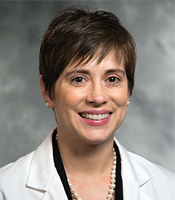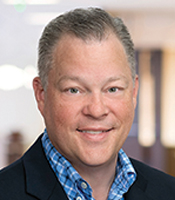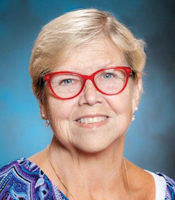 In many ways, looking years down the road is like viewing a blank canvas. You can imagine anything you want taking shape on it. In reality, the future is part abstract images, part white space, and part realistic landscape. In the end, we follow the numbers, the trends, the voices of the public and other stakeholders, experts, and visionaries to create a picture we can plan for with room for new brushstrokes as the future takes shape.
In many ways, looking years down the road is like viewing a blank canvas. You can imagine anything you want taking shape on it. In reality, the future is part abstract images, part white space, and part realistic landscape. In the end, we follow the numbers, the trends, the voices of the public and other stakeholders, experts, and visionaries to create a picture we can plan for with room for new brushstrokes as the future takes shape.
Start with the Numbers
Clearly, the numbers point to the future needs for post-acute and long term care, and they are significant. According to the U.S. Department of Health and Human Services, someone who is age 65 today has a 70 percent chance of needing long term care services at some point. Additionally, there could be a need for more than 3,000 new nursing homes in the coming years to keep up with the needs of the rapidly growing older population. In Arizona alone, the number of citizens over age 65 is expected to grow by 41 percent by 2030, and this state, as well as Florida and Nevada, may need to add 40 beds per facility to meet needs.
In fact, Washington, D.C., is the only location in the U.S. where the older population is likely to decline. Some states, including Alaska, Wyoming, Hawaii, and Vermont, likely will need only a few additional facilities.
“In five to 10 years, we will have an interesting dynamic,” said Bill Kauffman, senior principal at the National Investment Center for Seniors Housing & Care. “Given the current health care infrastructure, senior properties will have to play a role with higher-acuity residents. We saw a lot of this before COVID-19 and will continue to see more.” This presents an opportunity for communities to take on niche roles and specialize in areas such as ventilation units or diabetes care.
While the federal government provided significant amounts of stimulus money during the pandemic, Kauffman cautioned facilities against counting on the government to solve their challenges. Instead, they need to be seeking ways to gain market share and address staffing issues.
Mapping Staffing Strategies
According to American Health Care Association/National Centers for Assisted Living (AHCA/NCAL) data from 2022, 87 percent of nursing homes are dealing with moderate to high staffing shortages. According to the Centers for Medicare & Medicaid Services, nursing turnover in this sector was 53 percent between November 2021 and November 2022.
Since the pandemic, providers have become more creative in their strategies to attract staff. Looking years ahead, they should plan to continue to be aggressive in these efforts. “We need to find talent and find it early. We have to make efforts like we’ve never done before,” said Kauffman.
He further advised, “You need to go to universities and talk about how to encourage interest among students.” This may mean going to business schools and explaining to students there how they can run a property right after graduation. “You also need to think outside the box about rewards packages and ways to build loyalty,” he added.
Sherrie Dornberger, BA, RN, GDCN, IP-BC, FACDONA, executive director at the National Association of Directors of Nursing Administration/Long Term Care, cautioned that providers need to realize that directors of nursing (DONs) can’t wear five hats, even though many had to do so during the pandemic. “We are having DONs burn out at unhealthy rates, and they are leaving long term care,” she said, adding that those organizations getting support for DONs are more successful at attracting and keeping good nurse leaders.
Watch for changes in education requirements for various roles to address staffing shortages down the road.
For instance, physician practices partnering with nurse practitioners and physician assistants to care for nursing home residents will likely continue.
Elsewhere, we are starting to see licensed practical nurses (LPNs) take on responsibilities previously held solely by registered nurses (RNs), and certified nurse aides are being trained to take on roles such as medication administration assistant and assistant infection preventionist. Dornberger said, “Often facilities think they need to hire nurses with masters or doctorate degrees to be a DON, but many times I would rather have a nurse who has experience and certification in long term care. I think sometimes we get caught up with degrees.” She suggested that this will need to change if providers are going to attract more people to meet the needs of the wave of older adults coming down the pike.
Penny Cook, chief culture officer at Center for Innovation in Linthicum, Md., noted, “We will see more investment in an empowered workforce if we are going to achieve long-term stability. There will need to be improvements in wages and benefits but also the work environment.”
She agreed with Dornberger that there will be changing roles for RNs, LPNs, and others in similar roles. She also noted, “I’m seeing more states put an emphasis on education in all fields to get more people in the workforce and working with older adults.”
Accommodating Affordability
While saving for retirement was a lofty goal for baby boomers, many found themselves helping to support aging parents as well as adult children. Today, according to the Center for Retirement Research at Boston College, approximately 18 million middle-income baby boomers will be unable to pay for long term care needs for themselves, and their families are ill-equipped to help.
“Massive numbers of individuals in the boomer generation can’t afford to pay for long term care out-of-pocket and will count on the government and Medicaid. If more people are counting on the Medicaid system, how that will play out is still a question mark. We need to be talking more about this,” said Kauffman. There will need to be a middle-market product for this cohort, or these individuals will continue to spend down assets and count on Medicaid.
 “We need to look at ways to make care more affordable. This is critical,” said Milta Oyola Little, DO, CMD, president of AMDA – The Society for Post-Acute and Long-Term Care Medicine. “This may mean a national long term care health plan to enable people to pay for this care. We need more transparency about where money is being spent and look at ways to restructure financing.” There will be greater efforts to seek innovative ways to finance and provide care.
“We need to look at ways to make care more affordable. This is critical,” said Milta Oyola Little, DO, CMD, president of AMDA – The Society for Post-Acute and Long-Term Care Medicine. “This may mean a national long term care health plan to enable people to pay for this care. We need more transparency about where money is being spent and look at ways to restructure financing.” There will be greater efforts to seek innovative ways to finance and provide care.
Look for providers to seek insights from hospitality and other industries for ways to accommodate customers’ needs and interests while managing costs. Little stressed, “It is critically important to plan for the financial future. Medicare and Medicaid are not sustainable, and people may find themselves in a situation where they need care and the money isn’t there. We need more national conversation about long term care insurance, how it will work, and how it will be provided.”
Tech Touches Lives
Senior communities, Kauffman said, will need to be creative about ways to engage and integrate technology in-house to manage mundane tasks and make better and more efficient use of limited staffing.
“From an IT perspective, the industry has enormous opportunities. Those who think they will be able to make do with the same old thing will be left behind,” said Kauffman. Increasingly, older adults and their families, as well as senior- living and long term care staff, will expect technological innovations that are designed to keep them safe and make their lives easier, better, and more efficient.
At the very least, residents and others will expect high-speed Wi-Fi and the ability to plug in and charge their devices wherever they go. In addition, they will want smart-home technology that can be used for hands-free and voice-activated lighting, door locks, air conditioning and heating, and more.
Expect to see more virtual reality that enables residents to “visit” any place within the safety and security of their room or apartment. Personalized online programming and entertainment geared toward the older population also will be commonplace, and baby boomers will want access to state-of-the-art videoconferencing and the ability to have a virtual front-row seat to concerts and performances.
Wearables and fitness trackers will continue to be popular and important ways to help families and practitioners monitor vital signs and various conditions virtually. More facilities will have telehealth rooms with the equipment necessary to enable these visits and let family members participate from wherever they are.
 Watch for the use of remedies such as wearable patches, not only for pain but for calming and increasing energy. There also will be greater and more cost-effective use of genetic tests to determine how individuals metabolize various medications. As a result, prescribers will be able to do a better job of pinpointing the best interventions for each resident. This shows promise, suggested Mike Girard, managing director of Quantum Wellness Technologies in Dallas, for saving money and increasing the opportunity for better outcomes and fewer adverse events.
Watch for the use of remedies such as wearable patches, not only for pain but for calming and increasing energy. There also will be greater and more cost-effective use of genetic tests to determine how individuals metabolize various medications. As a result, prescribers will be able to do a better job of pinpointing the best interventions for each resident. This shows promise, suggested Mike Girard, managing director of Quantum Wellness Technologies in Dallas, for saving money and increasing the opportunity for better outcomes and fewer adverse events.
“There is a tremendous amount of innovative technology, some of which has been around for a while,” said Girard, adding, “We need to educate people about technology, but on whatever level they want to be educated on. Some individuals and organizations want to dig in and understand super granular details, while others just want the basics. We need to meet people where they are.”
Investing in technology doesn’t have to mean a huge and costly commitment. “It’s important not just to use tech for tech’s sake. It needs to create value and meet a need,” Girard said. He also noted that technology can have a positive impact on adult children, as well as residents. They are looking for technology that keeps their parents safe and engaged but also makes a difference in their lives, for instance, wearables to transmit information directly to them, apps that enable them to monitor a loved one’s finances, or genetic tests that can identify health risks they need to address.
Infrastructure Innovations
Perhaps the greatest challenge for providers will be the long-term trend toward infrastructure changes. Alice Bonner, PhD, RN, FAAN, chair of the Moving Forward Coalition and senior advisor for aging at the Institute for Healthcare Improvement, said, “We hear a lot from older adults who want to stay in their community or neighborhood as they age, even with health challenges. They want to be with people they care about.” The future, she said, needs to be designed based on what older adults say they want.
To design buildings and communities that will accommodate and appeal to residents in five or 10 years, it is important to ask older adults about their goals and what they would want in a senior community or long term care setting. These questions shouldn’t just be asked of people over age 65 but of their adult children and younger individuals who may be residents in the next decade and beyond. “We have to ask people about broader goals, including what they see for themselves in the next five years,” said Bonner.
Cook suggested the need for more creative alternatives involving home health and programs of all-inclusive care for the elderly to enable people to stay in their homes longer. However, she said, “there will always be a role for nursing home level of care.” Nonetheless, she added, “for various reasons, including lack of resources and staff, I think we will see fewer nursing homes and more closures in the coming years.”
While there is likely to be a greater demand for home- and community-based services, there will still be a critical need for nursing homes and other long term care facilities. However, expect to see facilities such as small group homes, with six people and home care staff providing care, or larger communities with smaller neighborhoods and pods, with six to seven residents in a pod with one aide.
 Home- and community-based care and nursing homes shouldn’t be competitors moving forward, said Bonner. Instead, the focus needs to be on how to have the right size care in each community that best meets the needs and desires of older adults and enables them to make informed choices. This means age-friendly health systems with the four Ms—what matters, medications, mentation, and mobility—at the center.
Home- and community-based care and nursing homes shouldn’t be competitors moving forward, said Bonner. Instead, the focus needs to be on how to have the right size care in each community that best meets the needs and desires of older adults and enables them to make informed choices. This means age-friendly health systems with the four Ms—what matters, medications, mentation, and mobility—at the center.
Whatever the setting, a renewed focus on creating a homelike environment is needed. Dornberger said, “Before the pandemic, we pushed homelike environments, and now facilities are far from that.” She suggested that the facility of 2030 will have found a way to balance safety with a homelike environment, with amenities like state-of-the-art air filtration and HVAC systems, and flooring, curtains, and furniture that will help minimize the spread of bacteria and viruses. At the same time, private rooms will be the norm and not a luxury.
Climate Challenges
Just about every week, there is news about a climate-related crisis, and one recent study suggests that nursing homes are at high risk yet ill-prepared. Yale School of Medicine researchers concluded that about 10 percent of nearly 6,000 nursing homes in some parts of the country are at risk of being affected by weather-related disasters, while about a third lack emergency preparedness.
Natalia Festa, MD, the study’s lead author and a research fellow at the National Clinician Scholars Program and Yale Program on Aging, said, “We speculate that improved coordination between nursing homes and municipal and regional emergency planning authorities may improve facilities’ risk awareness and preparedness. We also suggest that regulators may be able to coordinate with emergency planning authorities to identify nursing homes in areas with a higher risk of hurricane-related inundation and prioritize these facilities for remediation of outstanding or severe administrative emergency-preparedness deficiencies.”
According to data from the Gross Domestic Climate Risk, Florida, California, and Texas are the U.S. states most at risk from climate change, with potential for issues such as flooding, forest fires, and sea-level rise. Planning for new buildings or communities in these areas could be problematic and possibly ill-advised.
“Planning of new facilities requires an understanding of where high hazard zones are and what new ordinances and rules have been written related to climate,” said Darren Azdell, AIA, NCARB, LEED AP, principal at OUTSIDEIn Architecture. “We have existing facilities that need to expand or add units to be sustainable, but they can’t get additional space because they are in a high hazard zone determined by FEMA flood maps,” he said. Critical buildings such as nursing homes, hospitals, and fire stations can’t be built in these zones. He added that weather is becoming a problem everywhere. Among other concerns, there is a fault line from Florida to Washington, D.C., that resulted in a crack in the Washington Monument several years ago.
“It’s important to plan now. It only takes one disaster to destroy a facility,” Azdell said. Tornadoes are happening across the country. There has been flooding in areas that never flooded before, wildfires are on the rise, and gas lines could break because of seismic activity. Power stations are exploding and catching fire across the country.
Traditional generators aren’t the solution, Azdell said. He suggested, “We need to understand and embrace the technology available and being used effectively. If you have your own power and water treatment on-site, it gives you an advantage if there is a disaster.”
Cook noted, “I think we will see some communities renovated or newly built using green building technology and materials to counter or reduce the effects of climate change. We also will be seeing more efforts regarding things like recycling and composting being driven by residents.”
Addressing Ageism
The pandemic revealed an ugly undercurrent of ageism in the United States, and Little insisted this will need to change to care for future generations of older adults. She said, “I hope we can learn. We don’t do a good job of valuing things that come with age. It’s so much easier to hide our own aging and hide our aging adults and have few intergenerational homes. If we don’t address this, we are marginalizing a huge group of society who have made valuable contributions, and we do younger generations a disservice by depriving them of opportunities to engage with older adults.”
Joanne Kaldy is a freelance writer and communications consultant based in New Orleans.